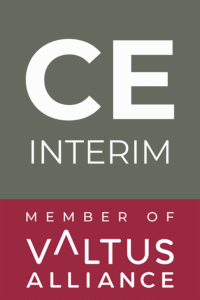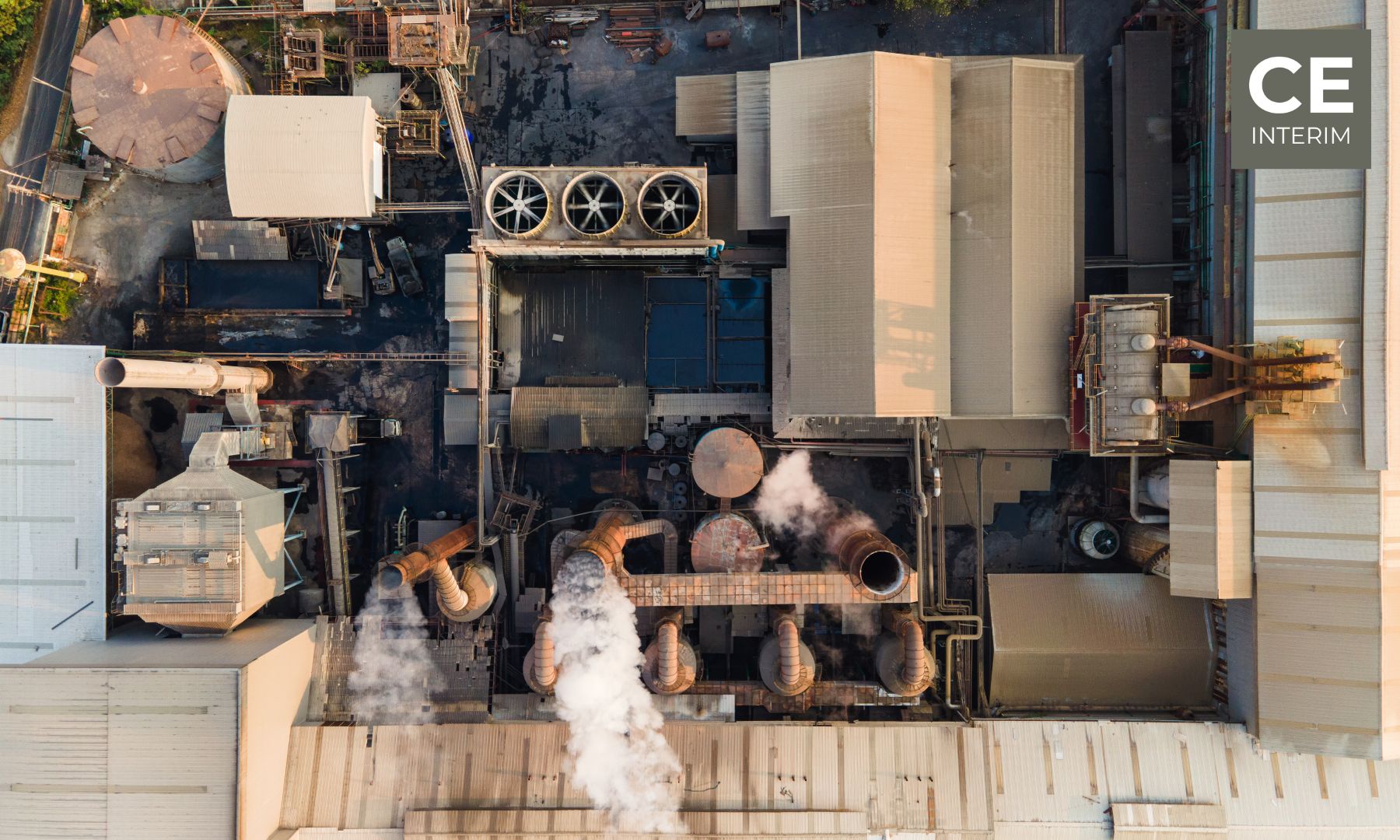Nemáte dosť času na prečítanie celého článku? Vypočujte si zhrnutie za 2 minúty.
Nad nemeckým priemyselným prostredím sa vznášajú temné mraky deindustrializácie, ktoré sa vytvorili v dôsledku rastúcich prevádzkových nákladov, energetickej krízy a regulačných tlakov. Ohrozujú ziskovosť a hodnotu pre akcionárov, zatiaľ čo spoločnosti bojujú o slnečné lúče rastu.
Ak ste majiteľom firmy v Nemecku, alternatívnymi stratégiami, ako je outsourcing a premiestnenie tovární do strednej a východnej Európy (SVE), sa môžete stať veľmi potrebným útočiskom. Ponúkajú možnosti úspory nákladov, chránia prevádzkovú efektívnosť a zachovávajú globálnu konkurencieschopnosť. Je však ťažké vybrať si jednu z nich.
V tejto podrobnej príručke sa porovnávajú obe stratégie s cieľom pochopiť, ktorá z nich lepšie zmierňuje riziká deindustrializácie a zabezpečuje hodnotu pre akcionárov. Poďme sa do toho ponoriť!
Aké sú hlavné riziká deindustrializácie?
Deindustrializáciou sa rozumie jav, keď sa v krajine znižuje alebo ruší priemyselná činnosť a zamestnanosť, najmä v spracovateľskom a ťažkom priemysle. Nemecko bolo hlavnou obeťou tohto hrozného trendu v dôsledku kombinácie viacerých faktorov.
V Nemecku je deindustrializácia poznačená viacerými rizikami, ktoré poškodzujú priemyselné podniky:
Rastúce náklady na energiu: Energeticky náročné odvetvia, ako je výroba, čelia neudržateľným cenám elektriny a plynu. V roku 2023 sa náklady Nemecka na priemyselnú energiu zaradili medzi najvyššie v Európe a za posledné dva roky sa zvýšili o 45%, uvádza sa v Eurostat.
Prevádzková neefektívnosť: Prísne predpisy spolu s narušením dodávateľského reťazca a nedostatkom pracovnej sily a klesajúcou pracovnou morálkou prispievajú k zníženiu prevádzkovej efektívnosti a konkurencieschopnosti.
Klesajúca produktivita: Nemecké spoločnosti sú už dlho známe svojimi vysokými štandardmi produktivity. Nedávna zmena prostredia ju však výrazne obmedzila.
Ak aj vaša firma čelí podobným problémom, musíte včas prijať taktické opatrenia.
Vplyv rizík deindustrializácie na hodnotu akcií
Riziká spojené s rastúcou deindustrializáciou znižujú hodnotu pre akcionárov a spôsobujú nemeckým podnikom utrpenie. Rastúce náklady ničia marže, čo veľmi sťažuje udržanie ziskovosti.
Dôvera investorov sa tým otriasa a spoločnosti sa snažia získať kapitál a hľadajú nové investičné príležitosti. Ak sa situácia nezvládne okamžite, môže spôsobiť dlhodobé škody a naznačiť pravdepodobný koniec spoločností. Obavy majú aj najväčší hráči.
Porovnanie outsourcingu a premiestnenia továrne do strednej a východnej Európy s cieľom zmierniť riziká deindustrializácie
Spoločnosti musia zaviesť rýchle stratégie na zmiernenie rizík spojených s deindustrializáciou. Ako dve optimálne riešenia sa ukázali premiestnenie továrne do strednej a východnej Európy a outsourcing. Musíte si však vybrať najideálnejší prístup pre vašu firmu.
Pomôžeme vám rozhodnúť, ktorý plán je pre vás vhodnejší:
Kontrola kvality a optimalizácia procesov
Outsourcing: Hoci sa outsourcing do vzdialených miest, ako je Ázia alebo Južná Amerika, môže zdať nákladovo efektívny, často vedie k zníženiu kontroly kvality. Podľa KPMG 41% spoločností čelí problémom s kvalitou externe zabezpečovaných činností.
Premiestnenie CEE: Na druhej strane, premiestnenie továrne do krajín strednej a východnej Európy umožňuje podnikom zachovať väčší dohľad nad výrobou. Veľká blízkosť tohto regiónu k Nemecku a náležité zosúladenie s normami kvality EÚ zabezpečujú spoľahlivé zabezpečenie kvality.
Napríklad spoločnosti v Poľsku a Maďarsku využívajú vysokokvalifikovanú pracovnú silu s odbornými znalosťami vo výrobe, čo zaručuje zachovanie kvality pri konkurencieschopných nákladoch.
Víťaz: Premiestnenie v strednej a východnej Európe umožňuje lepšiu optimalizáciu procesov a kontrolu kvality.
Bezpečnosť údajov a duševné vlastníctvo
Outsourcing: V mnohých nízkonákladových outsourcingových destináciách je právna ochrana duševného vlastníctva a bezpečnosť údajov slabšia, čo spôsobuje, že nemecké spoločnosti sú zraniteľné voči krádeži duševného vlastníctva. A McKinsey štúdia zistila, že 22% firiem, ktoré využívajú externé služby v regiónoch mimo EÚ, čelí značným obavám o bezpečnosť údajov, čo nie je prekvapením.
Premiestnenie CEE: Presťahovaním do krajín strednej a východnej Európy v rámci EÚ môžu podniky využívať prísne predpisy o ochrane údajov v rámci GDPR keďže tento rámec chráni duševné vlastníctvo a chránené informácie - znižuje riziká a prináša výhody.
Víťaz: Premiestnenie v strednej a východnej Európe, a to vďaka prísnym zákonom o bezpečnosti duševného vlastníctva a ochrane údajov.
Komunikácia a koordinácia
Outsourcing: Riadenie operácií zo vzdialených miest je náročné. Komunikačné medzery vaše problémy ešte znásobujú. Nedá sa im vyhnúť, pretože outsourcingové regióny majú odlišné jazyky, kultúry a časové pásma.
Podľa PwC správa, 30% spoločností sa stretáva s oneskoreniami a nedorozumeniami, keď zadávajú operácie do vzdialených regiónov, ako sú Čína, India a Filipíny. To spôsobuje neefektívnosť a nespokojnosť akcionárov.
Premiestnenie CEE: Premiestnenie tovární do krajín strednej a východnej Európy tieto problémy minimalizuje. Tieto krajiny majú k Nemecku kultúrne a geograficky blízko. Zabezpečuje to hladšiu komunikáciu a koordináciu. Minimalizujú sa aj jazykové bariéry a rozdiely v časových pásmach sú zanedbateľné, čo umožňuje efektívnejšiu spoluprácu.
Víťaz: Premiestnenie v strednej a východnej Európe, a to vďaka kultúrnemu zosúladeniu a blízkosti.
Blízkosť trhu a logistika
Outsourcing: Logistické problémy sú bežné v prípade vzdialených outsourcingových centier, ako je Ázia. Budete mať plné zuby dlhých prepravných časov, zvýšených nákladov na dopravu a zložitých colných procesov. Nemeckým podnikom to sťažuje včasné splnenie požiadaviek európskych zákazníkov.
Premiestnenie CEE: Krajiny strednej a východnej Európy sa bezproblémovo integrujú do európskeho dodávateľského reťazca. Na stránke . Eurostat správa tiež zdôraznila, že náklady na dopravu z krajín SVE sú 30-40% nižšia ako v Ázii. Ak sú dodacie lehoty kratšie, vaša spoločnosť môže rýchlo reagovať na požiadavky trhu.
Víťaz: Premiestnenie v strednej a východnej Európez dôvodu blízkosti a nižších logistických nákladov.
Nákladová efektívnosť a možnosti inovácie
Outsourcing: Outsourcing operácií dodávateľom v Ázii alebo Južnej Amerike poskytuje krátkodobé možnosti úspory nákladov. Riziká ako nízka kvalita výstupov, oneskorenie dodávok a zraniteľnosť duševného vlastníctva však výrazne prevažujú. Neexistuje teda žiadny potenciál budúceho rastu.
Premiestnenie CEE: Zatiaľ čo náklady na prácu v krajinách strednej a východnej Európy sú o 40-60% nižšie ako v Nemecku (Svetové ekonomické fórum), tieto krajiny sa môžu pochváliť aj technicky kvalifikovanou pracovnou silou. To umožňuje spoločnostiam zavádzať inovácie bez toho, aby obetovali nákladovú efektívnosť. Keďže máte prístup k vysokokvalifikovaným talentom za nominálne mzdy, je to dlhodobé riešenie pre rast hodnoty pre akcionárov.
Víťaz: Premiestnenie v strednej a východnej Európe prináša úspory nákladov a dlhodobý inovačný potenciál.
Infraštruktúra a pracovná sila
Outsourcing: Outsourcingové destinácie ako juhovýchodná Ázia môžu ponúkať konkurencieschopné mzdy, ale infraštruktúra je v porovnaní s Európou často nedostatočne rozvinutá. Keď je dopravná sieť slabá, nemožno sa vyhnúť prevádzkovým oneskoreniam a neefektívnosti.
Premiestnenie CEE: Krajiny ako Poľsko, Maďarsko a Česká republika výrazne investovali do priemyselnej infraštruktúry. Podľa Svetová banka, Poľsko patrí medzi 25 krajín s najvyššou efektívnosťou logistiky na svete, čo zabezpečuje plynulý tok tovaru a zdrojov. Vďaka dobre rozvinutej infraštruktúre a neuveriteľne kvalifikovanej pracovnej sile sa stalo ideálnou destináciou pre nemeckých výrobcov.
Víťaz: Premiestnenie v strednej a východnej Európe, vďaka modernej infraštruktúre a odbornej príprave pracovnej sily.
Predpisy a dodržiavanie predpisov
Outsourcing: Outsourcing do regiónov mimo Európska únia (EÚ) môže priniesť krátkodobé úspory nákladov, ale sťažuje orientáciu v regulačnom prostredí. Môžete čeliť problémom s dodržiavaním predpisov a právnym rizikám. Pracovné, environmentálne a bezpečnostné normy sú tam slabšie. Ochrana vašej spoločnosti pred možnými pokutami a poškodením dobrého mena je ťažšia.
Premiestnenie CEE: Ak sa presťahujete do niektorej z krajín strednej a východnej Európy, budete sa riadiť rovnakými predpismi EÚ ako v Nemecku. To zahŕňa pracovné, environmentálne a bezpečnostné normy, čím sa zabezpečuje, že nemecké spoločnosti si zachovajú pozitívnu povesť a zároveň sa vyhnú právnym rizikám.
Víťaz: Premiestnenie v strednej a východnej Európe, ponúka silné zosúladenie s právnymi predpismi a ich dodržiavanie.
Záverečný verdikt
Presun tovární do krajín strednej a východnej Európy je jasným víťazom tohto boja. Outsourcing môže byť krátkodobým prístupom, ale z dlhodobého hľadiska predstavuje kritické riziká. Premiestnenie výroby do krajín SVE je komplexnejším riešením, ktoré umožňuje podnikom zaškrtnúť všetky položky, aby si udržali konkurencieschopnosť.
Umožňuje zachovať kvalitu, zlepšiť kontrolu a zvýšiť efektívnosť a zároveň predchádzať nedorozumeniam, problémom s dodržiavaním predpisov a narušeniam dodávateľského reťazca. Je to najoptimálnejšia stratégia pre nemecké spoločnosti, ktoré sa obávajú rizík deindustrializácie a udržania hodnoty pre akcionárov.
Má vaša spoločnosť problémy s riadením rizík deindustrializácie? Zistite, ako môže premiestnenie závodu v strednej a východnej Európe ochrániť hodnotu pre akcionárov a zabezpečiť udržateľný rast. Nie ste si istí, ako riešiť naliehavé výzvy vašej organizácie? Spoločnosť CE Interim, ako dôveryhodný člen aliancie Valtus, ponúka špičkové riešenia interim manažmentu, ktoré pomôžu vašej firme zvládnuť premiestnenie továrne, dosiahnuť prevádzkovú dokonalosť a optimalizovať dodávateľské reťazce. Vďaka schopnosti zasiahnuť kdekoľvek a kedykoľvek je to potrebné, naše globálne odborné znalosti zabezpečia, že prechody vašej spoločnosti budú hladké a úspešné. Začnime!





